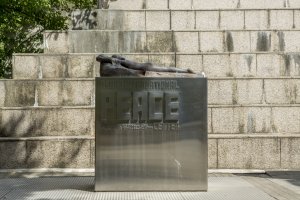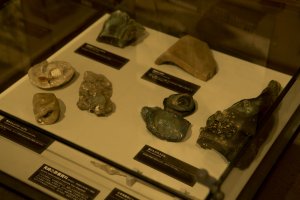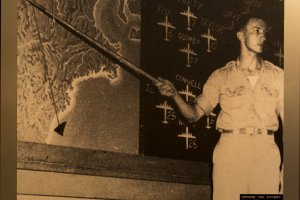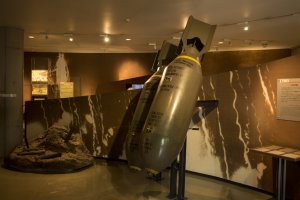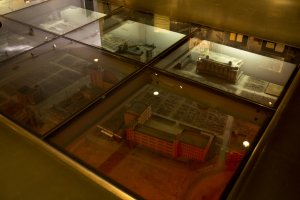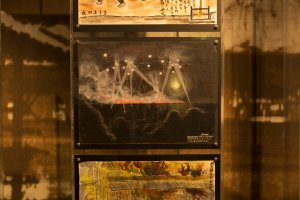Sadly conflicts have ravaged possibly every country on this planet and Japan is no exception. Though also a perpetrator, Japan has suffered the horrors of war and maybe to a degree more severe than rest of the world in some ways. Though of course such things should never have taken place at all, it’s extremely important to remember these events and Osaka Peace Centre is a museum with the intentions of keeping the past fresh in the minds of the present generation.
Located just to the south of Osaka castle and accessible by subway if you get off at Morinomiya station, the centre is situated in a rather tranquil area. The building itself is notable for its architecture and its unusual shaped roof represents the idea that people are individuals and by accepting these differences we can learn to coexist peacefully. The entrance fee is ¥250 for adults and as soon as you enter you are immediately taken back to Osaka in WWII. Replica bombs dropped by American B-29’s stand in the entrance of the first exhibition and as you go in further you’ll find eye-witness accounts, both written and painted that will place you into the shoes of those who suffered their wrath. The Japanese called these American planes ‘Chosora no yosai’ or gigantic battleship that covers the sky.
A path leads you gently through the exhibitions on display but with no real chronological order overall. Instead each exhibition flows chronologically so you can understand the way each topic unfolded. Starting at the bombing of Osaka during the Pacific war the museum gradually leads you down to the first floor. Divided in two, the right exhibition concentrates on Japanese imperialism of the 30’s and the tragic events of Hiroshima and Nagasaki. I was pleased to see the information on imperialism wasn’t presented in a biases manner, which is often the case with European history. The museum over all focuses on Japan’s military presence before and during WWII but it mainly addresses the suffering of Osaka. However, there is a replica prison cells from Auschwitz that commemorates its victims and there is also a small section devoted to the struggles in Africa in the entrance to the exhibition on the left. This area features a collection of personal items from the war, which offers a personal insight into the lives of soldiers and civilians.
Also located on the first floor is a small courtyard you’ll probably notice as you enter the building. The area is named ‘Toki no Niwa’ or garden of time, and here is a list of names of those who perished in the bombings of Osaka. It features a large memorial and acts as a place to mourn the victims and pray for future peace.
Though covering some heavy topics and events of the past the museum is an absolute must. For those who may not know so much about the Pacific war and Japan’s imperialist past the exhibitions on display offer a large host of information that will help you leave a very knowledgeable person and what better gift is there than knowledge?


